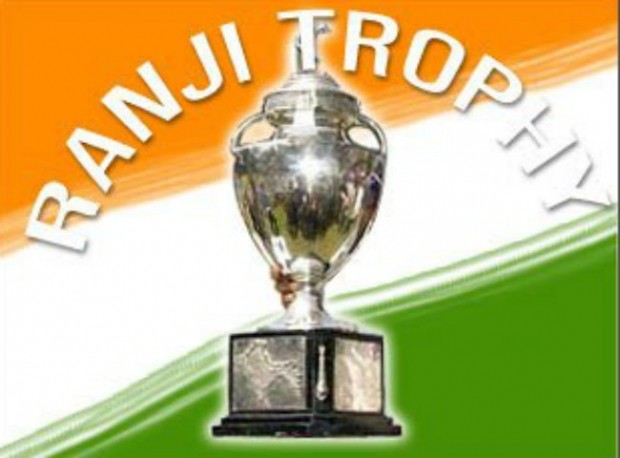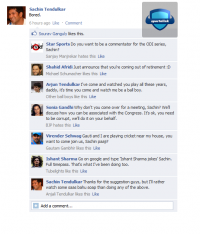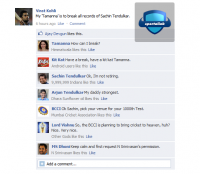4166 days ago
#Ranji Trophy, #Sachin Tendulkar, #Vijay Zol, #Sanju Samson, #Ishwar Pandey
Ranji Trophy: The Launch Pad for Youngsters

The new season of Ranji Trophy got under way on 27th October and it became the centre of the country’s attention as it officially kicked off the farewell celebrations for Sachin Tendulkar. But even though it was dominated by the fact that Sachin Tendulkar was playing his last domestic match, two young players were able to hog the limelight with their brilliant batting performances. Vijay Zol, with his double century on debut became the 7th youngest player to score a Double Century in Ranji Trophy history at age of 18 years and 340 days. Kerela’s Sanju Samson also reached his double century in Ranji Trophy on the same day at age of 18 years and 352 days, thus becoming the 8th youngest to score a Double Century in Ranji Trophy. Apart from Sanju Samson and Vijay Zol, two other exciting prospects, Baba Aparajith,and Satyam Choudhary have also started their Ranji Trophy campaign on a perfect note by scoring double centuries, showing their penchant for batting long at a time when Team India is struggling find batsmen who can play well in Tests.
In just over a fortnight, the world will see India’s greatest sporting icon bid goodbye to the game he has played competitively for more than half his life. The Little Master played very few Ranji Trophy matches but it was Ranji Trophy which acted as his launch pad to superstardom. Tendulkar made his Ranji debut against Gujarat in December 1988 at the tender age of 15 and he started in style, scoring an unbeaten 100, becoming the youngest Indian to score a century on first-class debut. He followed that up with scores of 58 and 89, making an immediate impact. His record after 11 innings in Ranji Trophy was 583 runs (average 58.30) with one century and six fifties, before his maiden tour of Pakistan in October 1989.
So how important is Indian Domestic Cricket in today’s context? For the keen followers of the Indian cricket, it holds immense significance. Going by the current senior selection committee’s approach it seems that gone are the days when hard toil on domestic circuit held no importance which was mainly due to the fact that India had an amazing batting line-up with Dravid, Sachin, Ganguly and Laxman and however good were the performances in the domestic circuit it was extremely difficult to dislodge these stalwarts. Cheteshwar Pujara is a fine example of the importance of consistent performance in the Ranji Trophy. For players at every level, the Ranji Trophy provides a challenge, even if some of the questions about the tournament remain the same. Regardless of the riches of the IPL, it is the only way, the only stairway, through which a player - however big or small - can enter the Indian Test team. There are simply no shortcuts.
There have been few consistent performers at the domestic level, but right now, selectors are looking for long term prospects and this is where young talent can push the selectors for a place in the team. Indian cricket, and specifically Test cricket is on the verge of seeing some drastic changes, and good performances at domestic level will get noticed, which were before ignored during the time of Sachin, Dravid, Ganguly and Laxman. One look at the India A squads selected for the unofficial Tests against South Africa, New Zealand A and West Indies shows that domestic performers are surely rewarded. As many as 43 players have been selected for seven “A” team Tests against these three teams, in a span of last three months which goes to show that not only India has young hopefuls knocking on the doors of the Indian Test team, but also those who have done well in domestic season last year have got their opportunities. Out of these players, how many ultimately graduate to the senior team depends on how they continue to perform but for all of them the domestic season is hugely important to stay in the radar of the selection committee.
Till now, we have been talking primarily about the batting department. But what about the bowling department? Bowling has been a major worry for the Indian team for a while now. The team has either been struggling with fitness of the bowlers or their form. Besides, very few new, eye-catching talent has come up at the domestic level, be it pacers or spinners. India has seen a huge improvement in the infrastructure and facilities in almost every state in the past few years but the standard of pitches were not taken care of. The life-less pitches make the bowlers toil throughout the season while batsmen enjoy a run fest. And what it takes to burst this bubble of confidence gained by playing on flat pitches is a tour of England, Australia or South Africa. And the price was paid in England and Australia when the batsmen of the Test team were humiliated on the lively tracks.
This season BCCI has taken a step towards correcting the direction. It remains to be seen how the recent changes- providing more juice to the pitches- influence the bowling department in the long run. In turn, it can also help the selectors in filtering out flat track bullies from those who could do well on challenging tracks besides giving the bowlers a much needed relief that can help in taking the challenge to the batsman rather than bowling negative lines.
Last season, young Madhya Pradesh fast bowler Ishwar Pandey and Vidarbha pacer Shrikant Wagh lit up the domestic campaign with their bowling performances. Particularly eye catching was Ishwar Pandey, who snared 48 wickets in eight matches last Ranji season with four five-wicket hauls. It remains to be seen whether he can continue his good work this season now that he will be getting assistance from the pitch as well.
Another positive thing about this season’s Ranji Trophy and for the youngsters, in particular, is the presence of several big names who are looking to force their way back to the India side - Virender Sehwag, Gautam Gambhir, Harbhajan Singh, Zaheer Khan and Yuvraj Singh – which will also add to the interest in the competition. The presence of big names in the state teams does a lot of good for the domestic cricket as well as the young cricketers. While it raises the standard of competition, it also exposes the juniors to vast experience of these players. The fact that all these top names still have something at stake and will be striving to perform in order to regain their place in the Indian team can only play to the advantage of their domestic teams. So that will only help the overall cricket. When you have two teams with quality international players, then the best quality of cricket will come out and in the process that is likely to help more youngsters to perform.
So the onus falls on the likes of Sanju Samson, Vijay Zol, Ishwar Pandey and other youngsters to take advantage of the situation with both hands and clinch the much coveted berth in the Indian Test team.











![Shahid Afridi Two Sixes in Two Balls(Last Over) [ Pak v/s India - Asia Cup 2014 ]](http://www.sportalink.com/assets/images/users/000/004/000004460_scl_thumb.jpg)
0 Comments/Replies